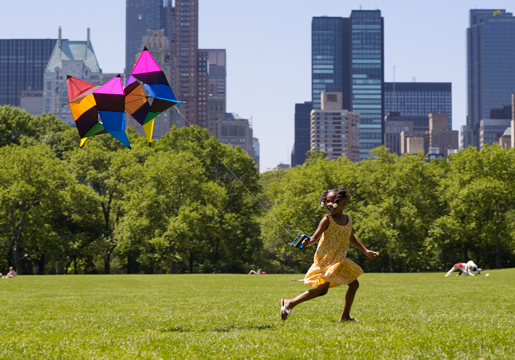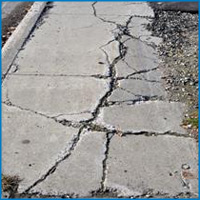We Can!® Community News Feature

The Way Your Community Is Built Could Be Affecting Your Family's Weight
Take a look around your city and neighborhood. Are there sidewalks? Where is the closest grocery store? Can you get there, or anywhere, without a car?
 Does your hometown or neighborhood make it easy for you and your children to be active in your daily lives? In countless communities across the nation, the answer is no. And, with one in every three children considered overweight or obese—a figure that has more than doubled in the last 30 years—the need to change this situation is great.
Does your hometown or neighborhood make it easy for you and your children to be active in your daily lives? In countless communities across the nation, the answer is no. And, with one in every three children considered overweight or obese—a figure that has more than doubled in the last 30 years—the need to change this situation is great.
Research shows that the way our communities are constructed contributes to weight gain in our society. Known as the "built environment," it includes the way everything from your home, your neighborhood and your community to roads, travel and work space are laid out.
Experts say built environments don't just affect physical activity—they also affect the foods we choose and time spent inside (likely in front of a television or computer screen), both major influencers of weight.
For example, many communities don't have grocery stores, which can mean reduced access to fresh and nutritious foods. In many places, convenience stores and corner markets offering packaged, processed snack foods are the only choices available.
Some neighborhoods do not have safe playgrounds or sidewalks, so children are forced to spend their free time indoors. Sitting instead of moving makes it that much harder to maintain a healthy weight.
So what can you do to change this?
Start by making a list of the improvements you could make in your community, and then get together with your neighbors and local leaders to discuss how you can make those ideas a reality.
Many communities have started by improving access to and maintenance of local parks; requesting safe and usable bike paths and sidewalks; asking for healthier meals and more physical activity at school; and exploring how to address a lack of nutritious food options and grocery stores.
For other tips on how to live a healthier lifestyle, go to the We Can! (Ways to
Enhance Children's Activity and Nutrition)® website: http://wecan.nhlbi.nih.gov. We Can! is a science-based program developed by the National Institutes of Health to provide tools and strategies for parents, caregivers and entire communities to help children—and whole families—maintain a healthy weight.
So, open your eyes to the possibilities of how even small steps—establishing a community-wide walk-to-school program, for example—can make a big difference in your family's and your community's health.










